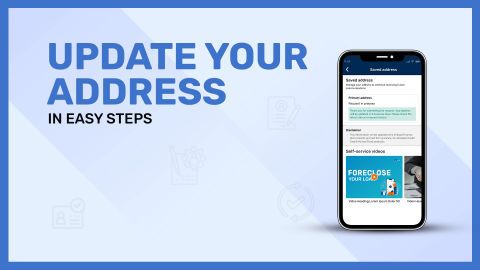How is the medical equipment loan EMI calculated?
When you take a medical equipment loan, one of the most important factors to understand is how your Equated Monthly Installment (EMI) is calculated. An EMI is a fixed monthly payment that includes both the principal and interest components of the loan, paid over a specified tenure. This structured repayment system makes it easier for borrowers to manage their financial obligations without straining their budget.The EMI for a medical equipment loan is typically calculated using the following formula:
EMI = [P x R x (1+R)^N] / [(1+R)^N – 1]
Where:
P = Principal Loan Amount
R = Monthly Interest Rate (Annual Rate divided by 12 and then by 100)
N = Loan Tenure in Months
For example, if you borrow ₹5 lakhs for a medical device at an annual interest rate of 12% for 3 years (36 months), the EMI is calculated using the above formula. This gives you a clear picture of how much you’ll pay each month, allowing for better financial planning.
Most lenders also offer online EMI calculators where you can input the loan amount, interest rate, and tenure to get an instant estimate. These tools are highly useful for comparing various loan options and selecting one that suits your budget.
Additionally, factors such as processing fees, part-prepayment charges, or foreclosure clauses may also impact the overall cost of the loan. Some financial institutions offer special schemes with zero-cost EMIs or subsidized rates for healthcare professionals or institutions, which can further affect EMI calculations.
It's also wise to check whether your EMI remains fixed or if the loan has a floating interest rate, which could change over time. Understanding these details not only helps in estimating your monthly liability accurately but also ensures you choose a repayment structure that aligns with your cash flow.
Steps to create a repayment schedule for property loan
Creating a repayment schedule for a property loan is essential to ensure timely payments and effective financial management. A well-structured repayment plan helps you avoid defaults, manage your monthly budget, and even save on interest through strategic planning. Below are the key steps to create a detailed and practical repayment schedule for your property loan:Understand the loan details
Note the principal amount, interest rate, loan tenure, and type of interest (fixed or floating).
Review any processing fees, prepayment penalties, or additional charges.
Know your EMI structure
Use the standard EMI formula or an online EMI calculator to estimate your monthly payment.
Confirm whether the EMI includes principal and interest or only interest (common during a moratorium period).
Choose the right repayment frequency
Decide on monthly, bi-monthly, or quarterly payments based on your income cycle.
Most property loans follow monthly repayment schedules.
Prepare an amortisation table
Create a month-by-month breakdown of principal and interest for the entire loan tenure.
Include details like outstanding balance, EMI amount, interest paid, and principal repaid.
Mark payment due dates
Set calendar reminders or enable automatic payments through your bank.
Always aim to pay on or before the due date to avoid late fees or penalties.
Include part-payment options
Factor in any opportunities you may have to make lump-sum part payments.
This can help reduce your principal amount and, in turn, your interest burden.
Account for floating rates (if applicable)
If you have a floating interest rate, make a flexible schedule that can adjust for rate changes.
Review your loan terms quarterly to revise your repayment plan if needed.
Monitor prepayment or foreclosure conditions
Understand the lender's rules for prepaying or closing the loan early.
Plan when and how much to prepay if you wish to reduce tenure or EMI.
Review your schedule periodically
Every 6–12 months, reassess your financial situation and adjust the schedule if required.
Consider increases in income or bonuses that can go towards early repayment.
Keep documentation updated
Maintain copies of your repayment schedule, payment receipts, and any correspondence with the lender.
This ensures you have a clear financial trail and protects against future discrepancies.
Benefits of following a structured repayment plan
Following a structured repayment plan for any type of loan—whether it's for property, medical equipment, education, or personal use—offers several financial and psychological benefits. It ensures better money management, reduces the risk of default, and helps maintain a strong credit profile. Below are the key benefits explained in detail:Improved financial discipline
A structured plan requires you to allocate a fixed amount regularly for repayments, helping you develop consistent financial habits.
It encourages budgeting and prioritizing essential expenses over unnecessary spending.
Predictable cash flow management
Knowing your monthly EMI in advance helps you manage your income and expenses more efficiently.
It prevents sudden financial stress, especially during months with other large expenses.
Reduced interest burden
When you stick to the schedule or make timely part-prepayments, the principal reduces faster, lowering the total interest paid over time.
You can even plan to repay the loan earlier without compromising other financial goals.
Lower risk of missed payments
A clear schedule with automated reminders or bank auto-debits ensures timely payments.
Avoiding missed EMIs saves you from penalties and helps maintain a healthy financial record.
Better credit score maintenance
Timely and consistent loan repayment improves your credit history and increases your creditworthiness.
A good credit score opens the door to better loan offers, higher limits, and lower interest rates in the future.
Financial peace of mind
Knowing exactly how much you owe and when you need to pay relieves stress and uncertainty.
It allows you to plan other life goals like travel, education, or investments with confidence.
Flexible adjustment options
Structured plans can be modified in case of income changes, allowing for extension or acceleration of repayment.
Lenders may offer top-up loans or revised EMIs based on your consistent repayment history.
Clear loan closure timeline
With a defined end date, you can work towards becoming debt-free by a certain time.
This goal-setting motivates better saving and repayment habits throughout the loan tenure.
Common mistakes to avoid in loan repayment
Repaying a loan requires planning, discipline, and awareness. While taking a loan may be easy, managing its repayment without pitfalls is equally important. Many borrowers unintentionally make mistakes that can lead to penalties, increased interest costs, or a damaged credit score. Here are some common mistakes you should avoid during loan repayment:Missing EMI deadlines
Missing even a single EMI can result in late payment charges and negatively impact your credit score.
Set up automated payments or calendar reminders to avoid this mistake.
Ignoring prepayment opportunities
If your financial situation improves, consider making part-prepayments to reduce the principal and interest burden.
Avoiding this can prolong your loan tenure unnecessarily.
Overlooking loan terms and conditions
Many borrowers don’t read the fine print, leading to surprises like prepayment penalties or processing fees.
Always understand the repayment clauses before signing the loan agreement.
Not maintaining a repayment Schedule
A lack of structured planning can lead to confusion and missed payments.
Keeping a detailed repayment schedule helps track progress and maintain consistency.
Taking additional loans without planning
Borrowing more while repaying an existing loan can lead to a debt trap if not properly managed.
Assess your repayment capacity before taking on new liabilities.
Choosing a longer tenure for lower EMIs
While lower EMIs seem attractive, longer tenures significantly increase the total interest paid.
Balance affordability with overall cost when selecting your loan tenure.
Relying solely on variable income
Depending only on bonuses, commissions, or inconsistent income for repayments can be risky.
Always plan EMIs based on stable income sources.
Not monitoring loan account statements
Ignoring your loan statement may cause you to miss errors or unexpected charges.
Regular reviews help ensure accurate tracking and timely resolution of issues.
Avoiding these common mistakes can lead to a smoother, more financially sound loan repayment experience.
How to adjust your loan repayment schedule?
Sometimes, your financial situation might change, and you may need to adjust your loan repayment schedule to better align with your current circumstances. Whether due to unexpected expenses, increased income, or changing financial priorities, modifying your repayment terms can help ease the pressure. Here’s how to adjust your loan repayment schedule effectively:Review your current loan terms
Start by understanding the original loan agreement, including tenure, interest rate, EMI amount, and any penalties for changes.
Knowing the terms allows you to make informed decisions about adjustments.
Contact your lender
Reach out to your lender to discuss your repayment needs.
They may offer flexibility in modifying your loan schedule, such as extending the tenure or adjusting the EMI amount.
Request for EMI restructuring
If you're facing financial difficulties, lenders may offer options such as EMI rescheduling or temporary moratorium periods.
Ensure you understand any fees, charges, or interest rate changes associated with restructuring.
Extend the loan tenure
Extending the loan tenure can lower your monthly EMI, making it more affordable.
Keep in mind that while it reduces the immediate EMI burden, you may end up paying more interest in the long run.
Prepay or make lump-sum payments
If you have extra funds, consider prepaying part of the loan to reduce your principal amount.
This will lower your EMI or shorten your loan tenure, depending on how the lender restructures your repayment schedule.
Switch between fixed and floating rates
If your loan has a floating interest rate, you may have the option to switch to a fixed rate for more predictable payments.
Discuss with your lender whether this change is possible and how it would impact your repayment schedule.
Monitor the new schedule regularly
Once your repayment schedule is adjusted, stay on top of the changes.
Keep track of your new EMIs, repayment timeline, and any future adjustments.




